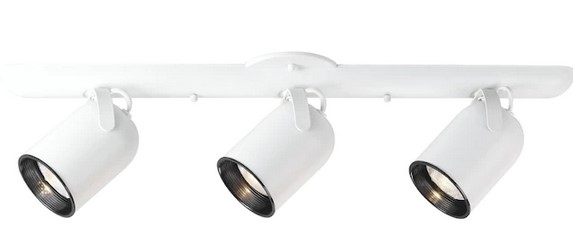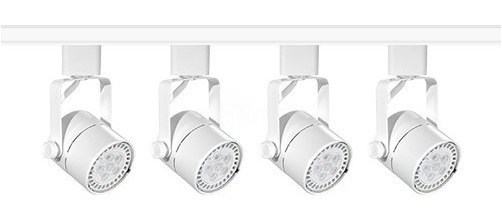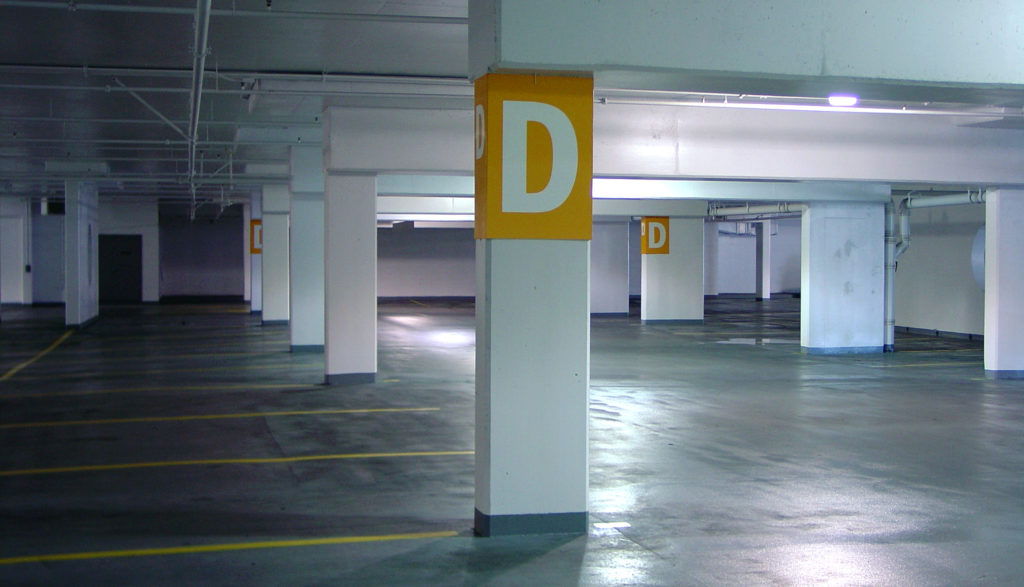Light bulb sales in the U.S.

How many light bulbs are sold each year?
The latest figure for sales in the United States show total sales of 7,534 million or 7.5 billion bulbs for a single year. That works out at 23 bulbs for every woman, child and man in the country or roughly 100 bulbs for a household. That is a lot of bulbs. You do need to factor in that this includes all light bulbs sold, not just the ones used in our homes, but also the ones used in offices, factories, stores, museums and for street and road lighting. Still, that is a lot of bulbs.
Within this article we break down the technologies used in the light bulbs we are buying, from the older incandescent style to the new LEDs that are taking over the market. We also look at the different types of bulbs we are buying from the standard pear-shaped home light bulbs to high powered street lights.
Overall light bulb sales are decreasing as older incandescent and halogen bulbs are being replaced by longer lasting LEDs. LEDs account for around 50% of the bulbs in use in 2020 worldwide and 58% in the United States.
What type of light bulb technology are we buying?
BY Light Bulb Technologies
There are currently four different types of technology for producing light in our light bulbs. We discuss the different types below. Sales figures are provided by the U.S. Department of Energy. As shown in the table below LEDs have been gaining a significant share of the market over the last few years.
Type / Year | 2018 | 2019 | 2020 |
LED | 50% | 59% | 69% |
Halogen and Incandescent | 47% | 38% | 30% |
CFL | 3% | 3% | 1% |
Incandescents
These are the old style light bulbs with a wire filament. When a current passes through it, the filament glows brightly, generating light. They waste a lot of power generating heat rather than light, making them very inefficient.
A plan was in place to effectively ban incandescent bulbs in the United States at the start of 2020, due to their inefficient power usage. However, the Department of Energy, who were responsible for the move, decided not to implement it and they returned to previous lighting standards.
Halogens
Like incandescents, halogen bulbs have a filament that glows when a current passes through it. The difference being that the element surrounding the filament contains only halogen gas. The gas increase the light produced and also extends the life of the filament. This makes them more efficient and with a longer lifetime than incandescent bulbs. But still not as efficient as CFLs and LEDs.
Compact Fluorescents
Compact Fluorescents or CFLs are fluorescent tubes, like the ones used in offices and stores. The manufacturing process folds the tubes into a compact shape so that they fit in a normal light bulb socket. Light is release when a current passes through the mercury vapor within the sealed tube. Unfortunately mercury is a neurotoxin. As such you need to careful disposing of CFLs.
CFLs are no longer popular in the US with LEDs largely taking their place. General Electric stopped producing CFLs in 2016. Consequently, this has seen sales going from 3% of the total market in 2018 to less than 1% in 2020.
LEDs
Light Emitting Diodes or LEDs are small pieces of semiconductor that emit a light when a current passes through them. They use the same semiconductors technology as microprocessor chips for our phones and computers. Within an LED light bulb there are 3 separate LEDs, one red, one blue and one green. These three different colors of light combine to produce a white light.
What type of light bulb are we buying?
By Sales Volume
As has been noted we are mainly buying LEDs. However LEDs, as well as halogens and incandescents, come in a variety of shapes and styles. Normally linked to what we use them for. The table below splits up the U.S. sales into ten different bulb groups. As can be seen almost half the sales come from A-type light bulbs. The “A” stands for arbitrary, meaning that this is the standard pear-shape for a light bulb. After the table we give a a detailed description of each of the different light bulb types.
Light Bulb Type | Sales (millions) | Percentage |
A-Type | 3500 | 46.5% |
Decorative | 1300 | 17.3% |
Directional | 531 | 7.0% |
Small Directional | 88 | 1.2% |
Downlighting | 687 | 9.1% |
Linear Fixture | 1100 | 14.7% |
Low/High Bay | 105 | 1.4% |
Street Roadway | 50 | 0.7% |
Parking and Parking Garage | 77 | 1.1% |
Building Exterior | 86 | 1.1% |
Total | 7534 |
A-Type Bulbs

A-Type or A-series light bulbs have the classic pear-shaped bulbs. We use them extensively in our homes. They normally have an Edison Screw base, 1/2 or 1 inch across. The “A” stands for arbitrary, meaning that this is the standard shape for a light bulb. As seen in light bulbs sales per year, 46% of bulbs sold are A-types..
Decorative Bulbs

Decorative covers a lot of other shapes of light bulbs that are not the standard “A” pear-shape. This includes globe, candelabra, flame, bullet and other non-standard shaped bulbs. These bulbs work in decorative features such as chandeliers, wall sconces, pendant, nightlights and lanterns. While LED version of these bulb shape are now available the take-up, in terms of sales, has been considerably slower than with A-type bulbs. Looking at light bulbs sold per year, 17% are decorative bulbs.
Directional Bulbs

Directional light bulbs includes reflectors, bulged reflectors and parabolic reflectors. The section in the sales table covers larger size bulbs used in accent and track fixtures in homes, offices, public buildings and retail displays. As reflectors the bulbs have an internal reflective coating which produces a cone of light. Also, the fixtures allow for the angling of the bulb downwards in a particular direction. LEDs are now the major technology for this group in terms of market sales.
Small Directional Bulbs

These are the smaller light bulbs used in directional lighting, which would historically have been small halogen reflectors. They are frequently used for accent and task lighting in homes, entertainment venues, museums and retail settings, frequently controlled by a dimmer. Traditional halogens are being replaced by small LED bulbs.
Downlighting

Downlighting uses reflector bulbs, producing a cone of light. The light is projected downwards from a recessed fixture located in a ceiling. They are used in our homes and commercial setting, providing ambient lighting or, sometimes, focused lighting. CFLs replaced a lot of florescent and incandescent downlighting bulbs, with LEDs replacing these in turn.
Linear Fixtures

Linear fixtures covers strip fluorescent lighting as used in offices, schools and stores. Historically they have provided low-cost, high-efficiency and long lifetime lighting. However, older units can suffer from flicker. Also, fixtures that houses the tubes, called the ballast, are prone to faults and malfunctions and are expensive to replace. Moreover, as fluorescent tubes are high-efficiency the drive to replace them with LEDs is not as strong. Looking at light bulbs sold per year, we see that roughly 15% of bulbs sold are linear fixtures.
Low/High Bay

Low and high bay lighting refers to lighting used in commercial and industrial settings to illuminate large indoor areas in manufacturing, retails and factory areas. Of these, low bay is for ceiling heights of 20 feet or less and high bay is anything above 20 feet. Because the area illuminated is normally large the lighting solution requires a high light (lumen) output. This leads to low bay needing 5,000 to 15,000 lumens and high bay 15,000 to as much as 100,000 lumens per fixture. Due to this high lumen demand, historically, specialist high wattage bulbs fluorescents were the most popular technology. Today high output LEDs are slowly making inroads into the market.
Street / Roadway

Street and roadway lighting illuminates our streets and roads. As such, its purpose is improving visibility for drivers, and providing lighting for pedestrians. To accomplish this, the lighting provided is directional, illuminating specific area. Also it is very bright as the lighting source is often high up. Consequently, specialist high wattage bulbs have provided this lighting in the past.
LED lighting provides a better directional focus of the light produced. This reduces light pollution, and increases energy efficiency. Also, LEDs with their long lifetimes avoid costly replacement work. As a result LEDs are replacing these historic lighting options.
Parking and Parking Garage

Parking refers to the high light output bulbs that are used to illuminate outdoor parking areas, In general the same sort of light bulbs are used as in street lighting. As with street lighting, LEDs provide distinct advantages in light utilization and are becoming the dominant technology.
Parking garage lighting relates to covered car parks with the lighting fixtures protected from the weather and normally mounted on low ceilings. These conditions have historically favored strip fluorescent lighting. Due to working with dimming circuits LED lighting takes advantage of natural illumination during the day saving energy and cost. Because of this LED technology is making inroads in this market.
Building Exterior

Exterior building lighting provides illumination for steps, driveways, porches, walkways, decks, building architecture and landscaped areas. It is normally used outside of residential, commercial and industrial buildings.
In general, floodlights and wall packs provide this lighting. Due to the high light output required CFLs, and specialist high wattage bulbs have been the historic choice. LEDs are currently moving into this market providing low maintenance, instant-on and long lifetime performance.
.